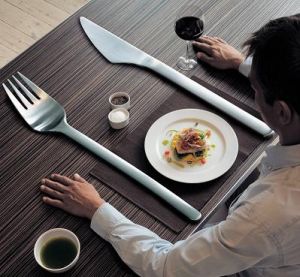 About a year ago I had a dinner meeting with a woman who was interested in doing business together. She didn’t know Atlanta well, so she asked me to pick a restaurant and make the reservation. I chose a great little place that was centrally located, famed for its delicious cuisine, and elegant without being expensive or stuffy.
About a year ago I had a dinner meeting with a woman who was interested in doing business together. She didn’t know Atlanta well, so she asked me to pick a restaurant and make the reservation. I chose a great little place that was centrally located, famed for its delicious cuisine, and elegant without being expensive or stuffy.
I was happy with my choice, but from the moment we sat down the woman could only complain about every little thing. The service was too slow. She didn’t like the table décor. The wine list wasn’t extensive enough, and there weren’t enough dishes to accommodate her gluten-free diet (which she hadn’t mentioned when she asked me to pick a place). I felt that everything had been lovely—besides the company. I knew right then and there that I didn’t want to work with someone who was so critical.
Complaining and whining and just generally being difficult can really affect how people see you. Who wants to dine with someone who is rude to the waitstaff or can’t take half a second to appreciate the moment? Even if the restaurant was truly terrible, it’s unproductive to complain about it the entire time. I’d rather deal with the issue and then move on with a shrug and a smile. I’m sure this woman’s aggressiveness had been an asset in her career, but it rubbed me the wrong way. I felt embarrassed at her behavior and anxious to call it a night.
The next time you’re dining out or socializing with others, wait a moment before voicing a complaint. Are you being petty? Are you just venting because you’ve had a bad day? Will whining actually make the situation better? Or should you shrug it off and try to be good company? I vote for the latter!





 As
As